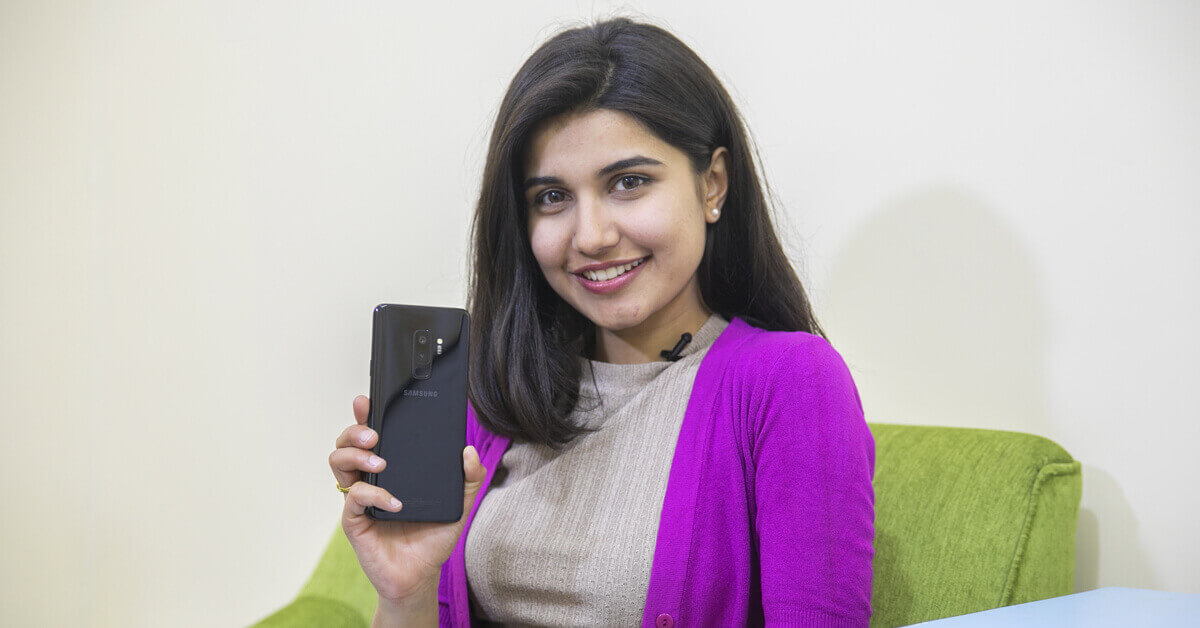
2017 was a great year for smartphones. However, almost all the smartphones were so feature packed that a question always reeled in people’s minds, What next for smartphones? At a time when these four words begged for an answer, Samsung came up with the Galaxy S9 and S9+. I have used these smartphones for almost one month now, and here’s my full review.
Samsung Galaxy S9 and S9+ Specifications:
- Display: 5.8/6.2 inches Super AMOLED WQHD+ (1440 x 2960 pixels) with Gorilla glass 5 (front and back) protection, 18.5:9 aspect ratio
- Chipset: Exynos 9810
- OS: Android Oreo with Experience 9 UI on the top
- RAM: 4/6 GB
- Storage: 64 internal storage, 128 GB (only for Samsung Galaxy S9+) Expandable up to 256GB (Uses SIM2 slot)
- Rear Camera (Galaxy S9): 12MP, f/1.5 – f/2.4, Dual Pixel PDAF, OIS, LED flash
- Rear Camera (Galaxy S9+): Dual: 12 MP (f/1.5-2.4, Dual Pixel PDAF) + 12MP (f/2.4, AF), OIS, phase detection autofocus, 2x optical zoom, LED flash
- Front Camera: 8 MP, f/1.7
- Connectivity: Wi-Fi a/b/g/n/ac, Bluetooth 5.0, A-GPS, 3G, 4G LTE, USB Type C 3.1 reversible connector
- Sensors: Iris scanner, fingerprint (rear-mounted), accelerometer, gyro, proximity, compass, barometer, heart rate, SpO2
- Battery: 3000/3500 mAh non-removable battery, with Fast Charging (QC 2.0)
- Features: Intelligent Scan, AR Emojis, IP68 Certified (Water and Dust resistant), Wireless Fast charging
- Price: Rs. 87,900 (4GB/64GB) / Rs. 99,900 (6GB/64GB) / Rs. 104,900 (6G /128GB Galaxy S9+)
Design
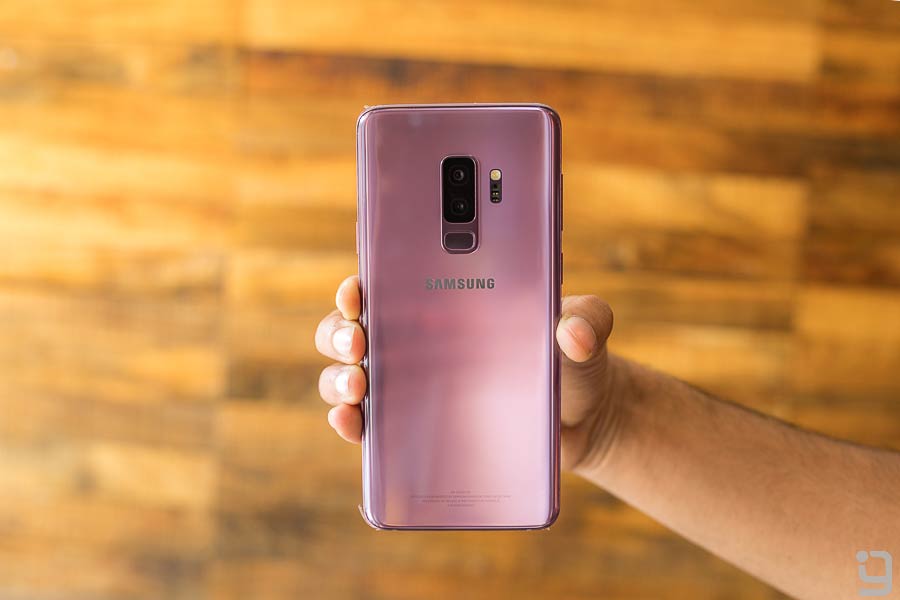
Even with notches picking up the pace this year, Samsung has opted to stay traditional with the Galaxy S9 and S9+. The bezels are now short, and the top bezel now holds all the sensors and the front-facing camera. Even though smartphones with notches might provide a little bit extra screen space, although minimum, I still like Samsung’s decision regarding the bezels. And talking about the side bezels, there are none! The display of the devices is curved on the sides to blend with the aluminum frame which in turn merges with the glass back. Oh, and the IP68 Dust and Water resistance is certainly a major plus if you want to take your smartphone for a dip sometimes. Design wise, I must give full marks to Samsung as the company has yet again come up with a sleek and premium device that is worth every penny you pay.
Display

One of the major differences between the Galaxy S9 and S9+ is their form factor. The Galaxy S9 comes with a 5.8-inch display while the plus variant has a 6.2-inch screen. However, both the displays have a Super AMOLED panel with WQHD+ resolution. And talking about the quality of the display, well let’s just say the Samsung’s flagships have the best display in the business right now, period! You will especially notice the superiority while viewing high-quality videos. It has ample vibrancy with rich saturation and details to go along. And the minimal bezels certainly help the cause. There are only a handful of flagships currently available in Nepal right now, and the S9 could house the best display on any smartphone for months to come.
Performance

The internal hardware of the devices too have gotten a revamp with the new octa-core Exynos 9810 chipset that now has a 30% performance boost, and that is seen while using the smartphones as well. The Galaxy S9 with its 4 GB RAM and the Galaxy S9+ with its 6 GB RAM can handle all your multitasking needs without dropping a sweat. Gaming is a fun experience on these devices as you can expect a lag-free performance at all time. However, after long sessions of gaming, navigating through the internet and using the camera, they tend to get warm at times.
If the benchmark scores are taken into account, the Galaxy S9 and S9+ are certainly the champs. They are the highest rated smartphones on Antutu and the Single-core and multi-core score on Geekbench is top-notch.
Samsung still has a lot to do with Apple’s A-series chipset, though, as the iPhone X certainly outperforms the S9 and S9+ and that is also seen in benchmark results.
Also Read: iPhone X Long Term Review
Software
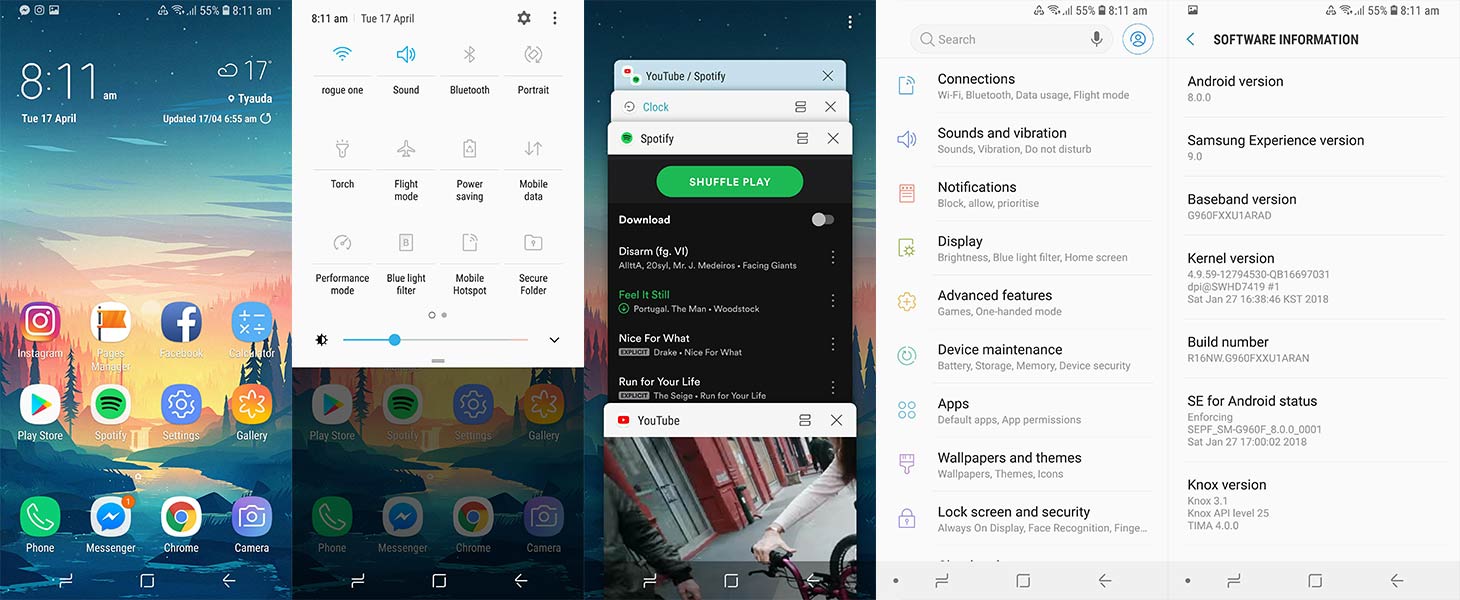
On the software side, the devices come run on Android 8.0 Oreo with Experience UI on top. The software on the devices is easy to use as Experience UI has certainly evolved to become lighter and lag-free over the years. However, there are still dual applications that are meant for the same purpose. Now you can indeed remove some of the applications like Samsung gear or voice recorder, but there are lots of other applications which are just eating up space on the devices. It would have been very appreciable if Samsung gave it’s users this freedom!
Camera
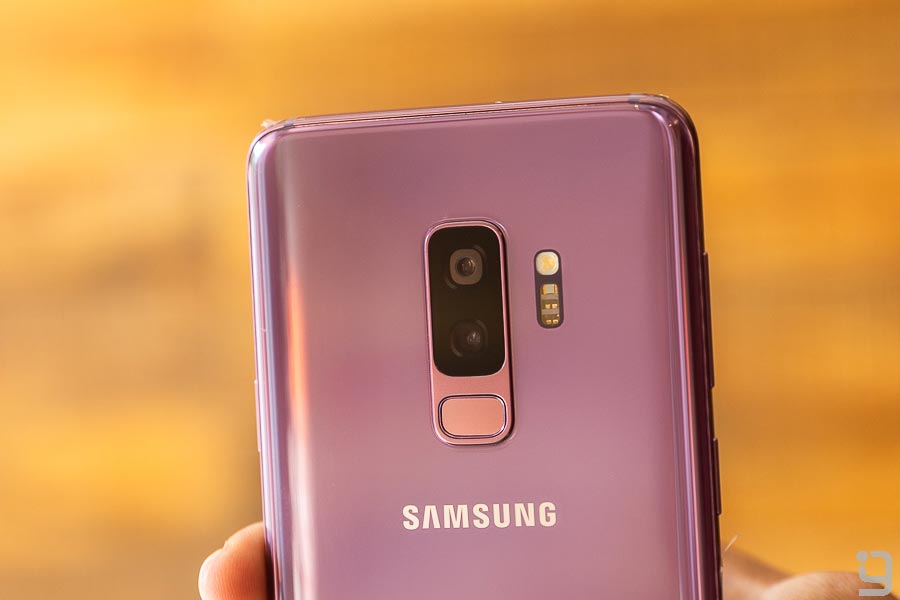
One of the major differences between the Samsung Galaxy S9 and S9+ is certainly the camera. While the S8 and S8+ had the same camera setup on the back and front, the Galaxy S9 and S9+ are somewhat different. The former device has a single camera on the rear side while the latter has dual cameras. However, the only time you will miss dual cameras on the S9 is while taking pictures on the Live Focus mode, aka Portrait mode.
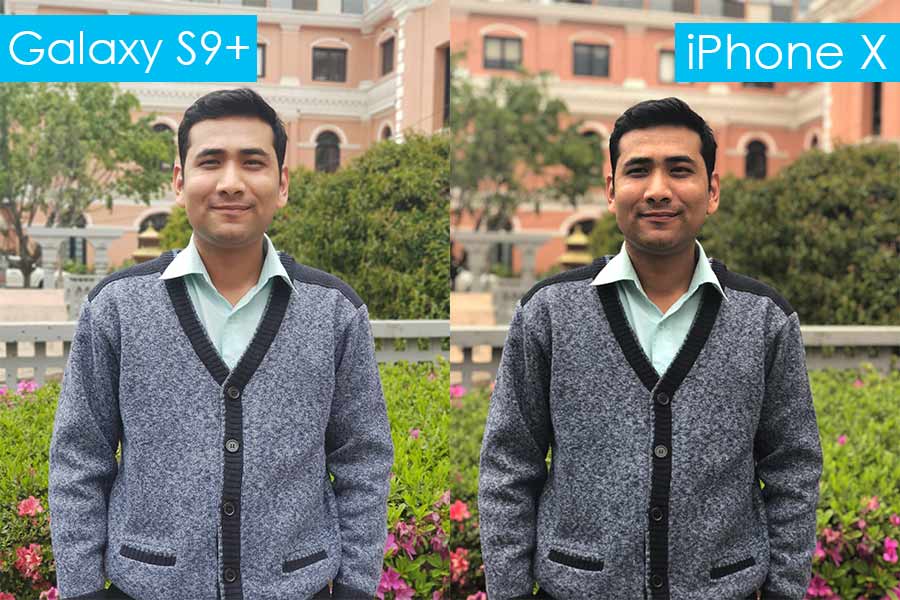
The Live Focus mode does a well enough job to blur out the background, but there is still work to be done as it still isn’t on iPhone X’s Portrait Mode level as you can see from this comparison shot. Samsung has included a unique feature which lets users change the amount of blur before or after taking the image, which is certainly useful.
One similarity both the phones hold is the camera with a changeable aperture. The Galaxy S9 and S9+ now come with a camera that can try to adapt to its surrounding. The f/1.5 aperture takes in lots of light for better low-light pictures while the f/2.4 aperture takes sharp pictures. Now, this feature might really be the next big thing on smartphones where smartphones casually widen or narrow their apertures, but as a “normal” user, I didn’t notice that much of a difference. Yes, the pictures are sharper during night time from the f/2.4 aperture, but will you notice a huge difference? Not really!
Let’s compare the camera the S9+ with the iPhone X, which is its direct competitor as other flagships like the Google Pixel 2, LG V30 and Huawei P20 Pro have not made their way in Nepal.
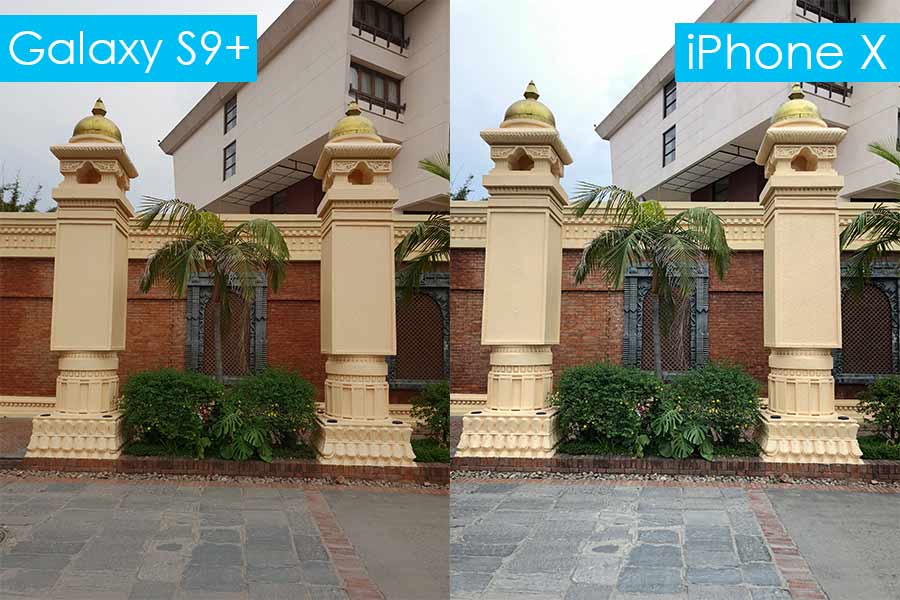
One thing I noticed during the comparison was that the images from the S9+ have a slight pinkish tint to them. This is seen in images with a white object and more clearly on some night-time shots. The iPhone’s samples meanwhile have a warmer tone. Now, apart from the exposure level that iPhone’s camera can hold, I think the S9+ holds a little edge in every other aspect. Yes, the images from the Galaxy S9+ is a bit oversaturated sometimes, but it captures a lot of details which I viewed when I zoomed into the images.
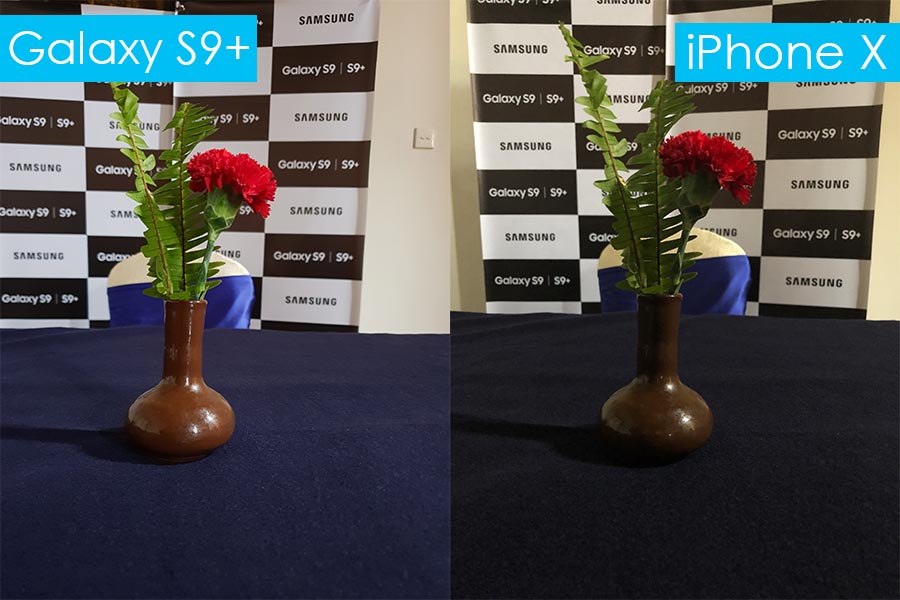
And the night light shone better on the Samsung flagship as there were more details on s9+ with proper noise control and exposure level. However, the pinkish tint that I talked about before was clearly visible in some of the night shots.

I took this picture at dusk and the whole image came out with a lot of pinkish tints. Now this tone can help amplify the colors if the object is reddish or, say, maroon, but with white on focus, you might get a different result sometimes.

One area where Samsung hasn’t really upgraded is the front-facing camera. At a time when almost all the smartphones are focusing on selfies, Samsung has apparently chosen to stay with what it has. The selfies are of good quality in daylight, but under low light, the images are quite muddy and lack sharpness.

Here are some other samples from the Samsung Galaxy S9 and S9+:
In terms of video quality the smartphone stabilizes the videos well in full HD setting, it captures ample details and the colors pop out nicely as well. However, the field of view slightly decreases when you toggle the video capture button. Under low-light, the videos definitely live up to the flagship tag, but it has a touch of noise here and there. The slow-motion and super slow motion videos are a whole another story so I will be talking about them later.
AR Emoji
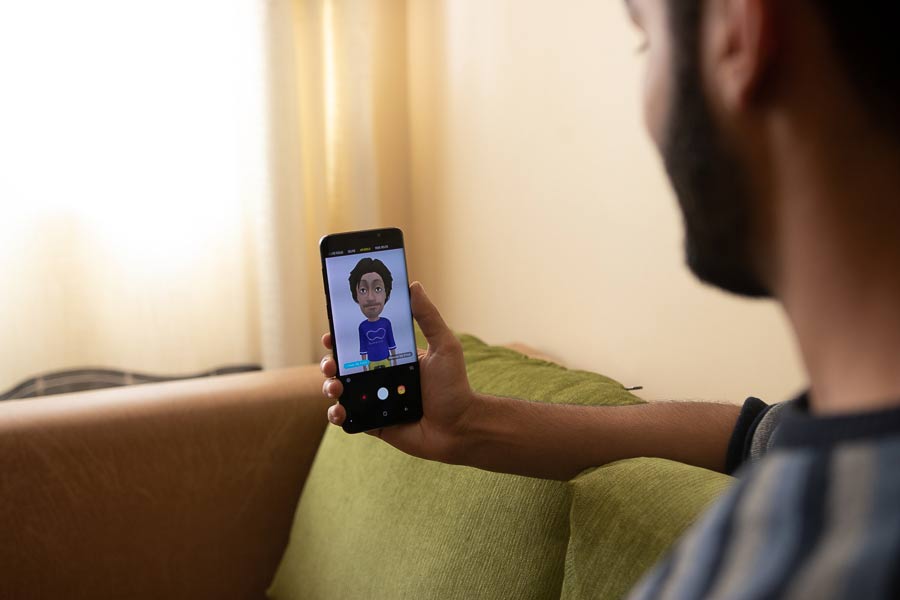
The front-facing camera now supports Samsung’s own AR Emoji which is its answer to Apple’s Animoji. Although emoji-flying yourself sound fun, the AR Emoji feature is quite raw and unfinished, and I noticed this right after I used it. The device couldn’t read what I was doing with the emoji not emulating my expressions. Hopefully, Samsung will listen to its customers, just like it has listened to this time around by placing the fingerprint scanner below the camera setup.
960fps Slow Motion
Samsung has boasted its slow-motion feature that captures videos at 960fps in HD quality. At first, I really enjoyed using this feature as it nailed slowing down the shots, but then I realized how the videos lacked quality. They lack saturation, sharpness, and details, and you won’t like what it produces at night light. Toggling on the super slow-mo tab, you will realize how the smartphone decreases the exposure exponentially. This same issue is also seen on 240fps slow-mo which reduces the exposure by a level. Also, the slow-mo videos slow down for just around 2 seconds which is a lot less time.
Hardware
 This time around, Samsung has included dual speakers (one on the bottom and another being the earpiece itself) on their flagship which are now AKG tuned. Well, as compared to Samsung’s previous flagships, the dual speakers have certainly gotten better. However, if we compare the sound with the iPhone X, the Apple flagship sounds better. The dual stereo speakers are a plus, but with AKG also working together, I had expected something better.
This time around, Samsung has included dual speakers (one on the bottom and another being the earpiece itself) on their flagship which are now AKG tuned. Well, as compared to Samsung’s previous flagships, the dual speakers have certainly gotten better. However, if we compare the sound with the iPhone X, the Apple flagship sounds better. The dual stereo speakers are a plus, but with AKG also working together, I had expected something better.
This time, the Samsung flagships have combined facial recognition with Iris Scanning technology for security purpose. While this sounds interesting, this feature can’t really unlock the smartphones in a jiffy like a fingerprint scanner. The fingerprint scanner, which has been engraved in the right place this time, is adaptive and the unlock is faster than the Intelligent Scan. The fingerprint sensor on the S9 is easily reachable and isn’t placed awkwardly and it unlocks the phone in an instant. However, the animation takes a bit of time, so you might feel a little lag while comparing it against, say, the Oneplus 5 or 5T.
Battery
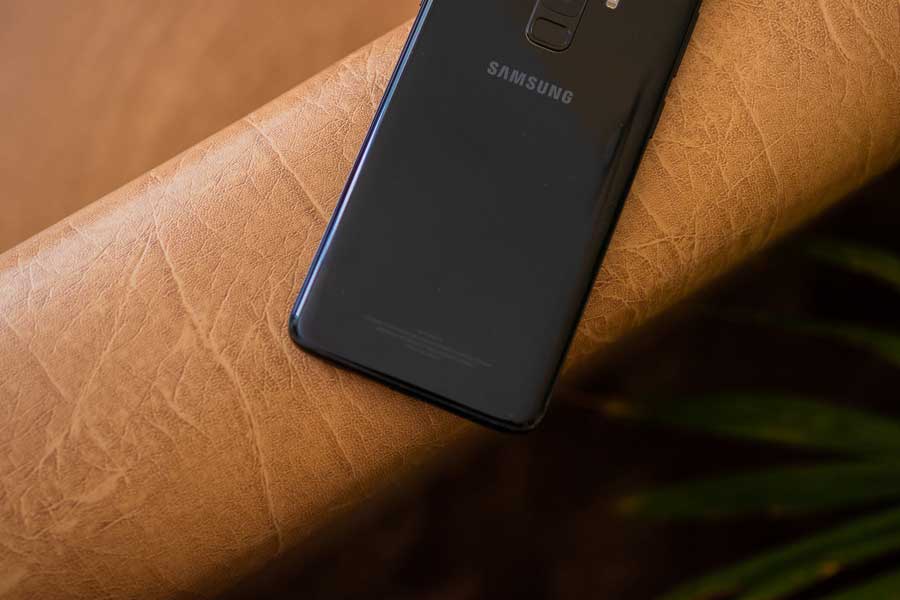
The other area where the S9+ edges out the S9 are in the battery department as it has a 3,500 mAh battery against the 3,000 mAh of the S9. Since the Note 7 debacle, Samsung has always tried to stay on the safer side and this time too, it’s not different. Backing up a tall WQHD+ display is not easy and that is clearly seen in the battery life as the Galaxy S9 provides around 3.5-4 hours of screen time while the S9+ gives around 4.5-5 hours. For a flagship smartphone worth a fortune, I have to say the battery number do not do enough justice. In terms of charging time, with Quick Charge enabled, the Galaxy S9+ takes around 1 hour 30 minutes to charge the device whereas the S9 takes a little less time. I was really hoping Samsung would include a long-lasting battery on the Galaxy S9 and S9+ but the company has compromised on that front.
Insurance
Now there is a reason why I am drawn towards the S9 and that is the insurance Samsung is currently providing on its smartphone. The build of the Galaxy S9 has made the phone quite slippery, and I did happen to drop it hard on the display once. I had thought the display repair was free with the 1-year breakage insurance, but I did end up paying Rs. 6000 for the display which would generally cost a huge amount of money. So, kudos to Samsung for the insurance campaign.
Special Feature

The S9 also has the basic flagship features such as the heart rate, stress, and oxygen saturation. These features could be useful for someone who is into monitoring their day-to-day health stats while some might even feel that these components are taking up space where Samsung could have included a bigger sized battery!
Conclusion
So, my final words for the Samsung Galaxy S9 and S9+ would be that these are the best options for flagship devices in Nepal right now. Yes, the iPhone X is a direct competitor but is a little bit expensive, the Mate 10 Pro is has begun to lose its charm and the Huawei P20 Pro is yet launch here. So, even if you are not a Samsung fan, you only have the iPhone X as a choice. But considering the good performance, the insurance facility, the top-notch display and the camera, I see the Samsung Galaxy S9 or the S9+ as the finest options for Android flagships in Nepal.
| Pros | Cons |
| Top-quality display | Battery Life |
| Sleek Design | Unfinished AR Emoji |
| Minimalistic Bezels | Low-quality slow-motion video @960fps |
| Great Camera |









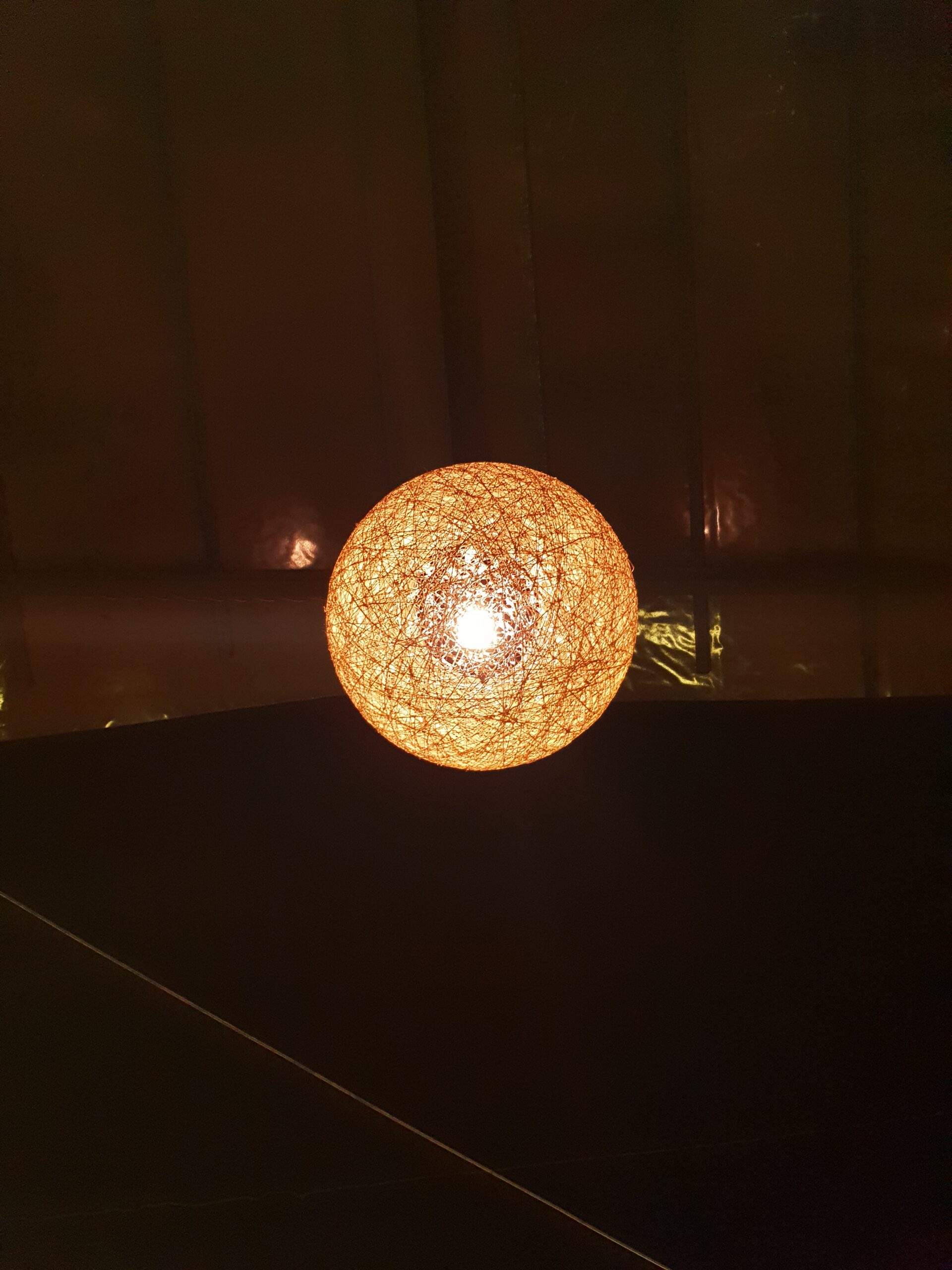

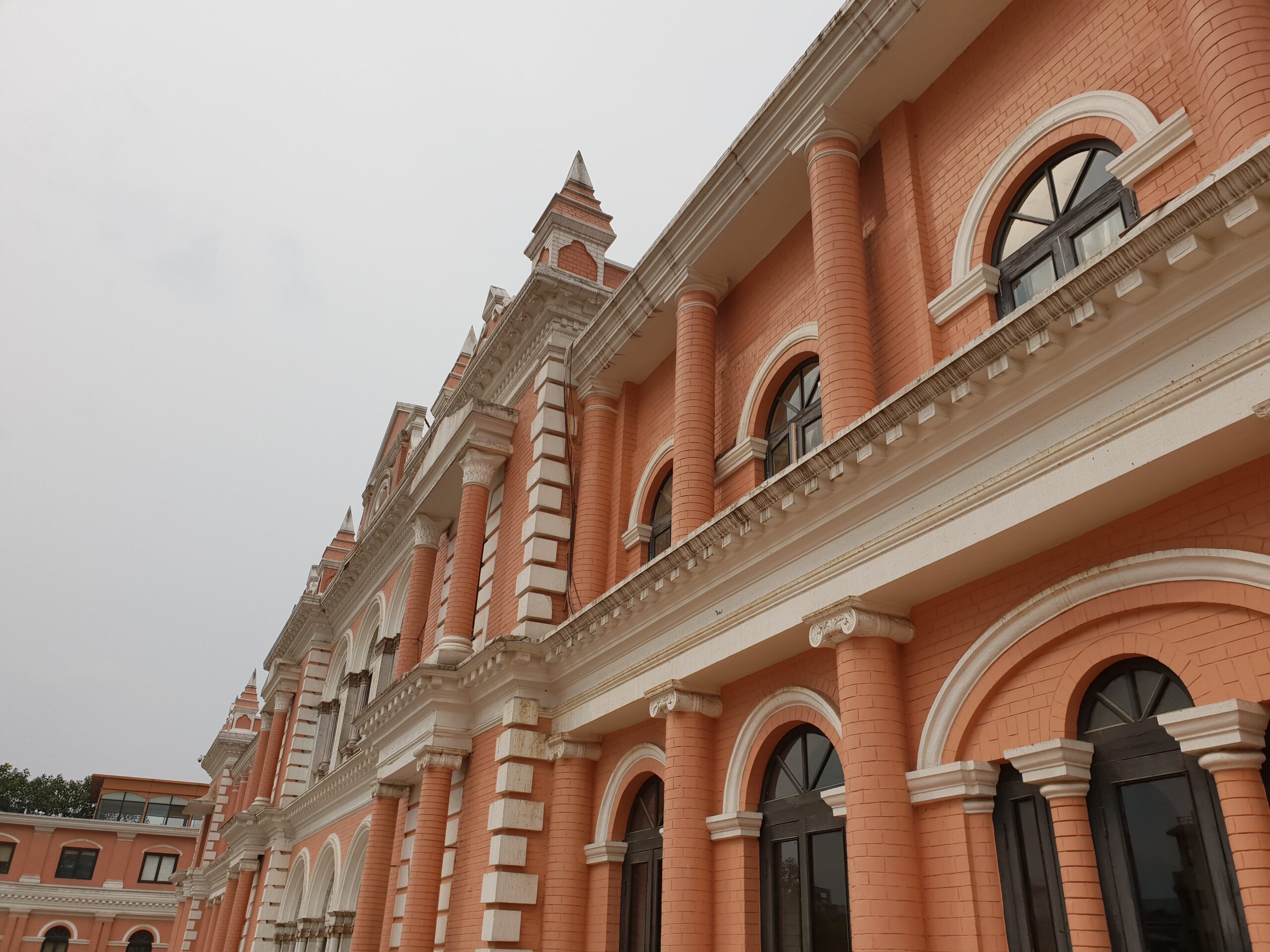


![Best Gaming Laptops in Nepal Under Rs. 250,000 (रु 2.5 Lakhs) [2025] Best Gaming Laptops Under 2.5 lakhs in Nepal [Feb 2025 Update]](https://cdn.gadgetbytenepal.com/wp-content/uploads/2025/02/Best-Gaming-Laptops-Under-2.5-lakhs-in-Nepal-Feb-2025-Update.jpg)
![Best Gaming Laptops in Nepal Under Rs. 120,000 (रु 1.2 Lakhs) [2025] Best Budget Gaming Laptops Under Rs 120000 in Nepal 2025 Update](https://cdn.gadgetbytenepal.com/wp-content/uploads/2025/05/Best-Budget-Gaming-Laptops-Under-Rs-120000-in-Nepal-2024-Update.jpg)
![Best Laptops Under Rs. 80,000 in Nepal [2025] Best Laptops Under 80,000 in Nepal March 2025 Update](https://cdn.gadgetbytenepal.com/wp-content/uploads/2025/03/Best-Laptops-Under-80000-in-Nepal-March-2025-Update.jpg)
![Best Gaming Laptops in Nepal Under Rs. 200,000 (रु 2 Lakhs) [2025] Best gaming lapotp under 2 lakhs Nepal Feb 2025](https://cdn.gadgetbytenepal.com/wp-content/uploads/2025/01/Best-Gaming-Laptops-Under-2-Lakh-Nepal-Feb-2025-Update.jpg)

![Best Mobile Phones Under Rs. 15,000 in Nepal [Updated 2025] Best Phones Under 15000 in Nepal 2024 Budget Smartphones Cheap Affordable](https://cdn.gadgetbytenepal.com/wp-content/uploads/2024/03/Best-Phones-Under-15000-in-Nepal-2024.jpg)
![Best Mobile Phones Under Rs. 20,000 in Nepal [Updated] Best Mobile Phones Under NPR 20000 in Nepal 2023 Updated Samsung Xiaomi Redmi POCO Realme Narzo Benco](https://cdn.gadgetbytenepal.com/wp-content/uploads/2024/01/Best-Phones-Under-20000-in-Nepal-2024.jpg)
![Best Mobile Phones Under Rs. 30,000 in Nepal [Updated 2025] Best Phones Under 30000 in Nepal](https://cdn.gadgetbytenepal.com/wp-content/uploads/2025/01/Best-Phones-Under-30000-in-Nepal.jpg)
![Best Mobile Phones Under Rs. 40,000 in Nepal [Updated 2025] Best Phones Under 40000 in Nepal 2024 Smartphones Mobile Midrange](https://cdn.gadgetbytenepal.com/wp-content/uploads/2024/02/Best-Phones-Under-40000-in-Nepal-2024.jpg)
![Best Mobile Phones Under Rs. 50,000 in Nepal [Updated 2025] Best Phones Under 50000 in Nepal](https://cdn.gadgetbytenepal.com/wp-content/uploads/2025/01/Best-Phones-Under-50000-in-Nepal.jpg)
![Best Flagship Smartphones To Buy In Nepal [Updated] Best flagship phone 2025](https://cdn.gadgetbytenepal.com/wp-content/uploads/2024/07/Best-Flagship-Phones-who-is-it-ft-1.jpg)